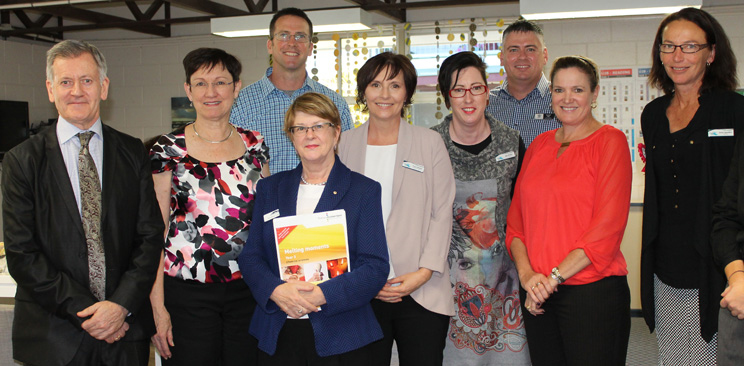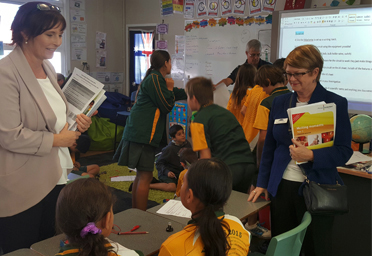
Primary Connections was on show at Queensland’s Currumbin Primary School in August after the local member, The Hon Karen Andrews MP, Parliamentary Secretary to the Minister for Industry and Science, had asked to see the Academy’s primary school program in action. While Ms Andrews was unfortunately unable to attend on the day, the students and teachers demonstrated their knowledge and critical thinking skills to Ms Andrews’ Policy Advisers Sophie Finemore and Michael Read, and Mr Randall Hall, Principal Science Education Adviser from the Gold Coast Regional Office of the Queensland Department of Education and Training. The Academy’s Secretary Education and Public Awareness, Professor Pauline Ladiges AO FAA, and Shelley Peers and David Kellock from Primary Connections also visited the school.

The group visited three classes implementing Primary Connections units and engaged with students working on electric circuits (Year 6), exploring changes caused by melting and freezing (Year 3), and investigating how different materials conduct heat (Year 3). The Academy appreciated the efforts of the Principal Ms Anne Saunders, Head of Curriculum Tracie Heaton, and the students and their teachers, Kim Kennedy, Paul Guilfoyle and Jo Birgan, in sharing their enthusiasm for science.
Primary Connections is currently analysing the results of a survey that aimed to reveal what resources teachers use to teach science, what they like about them and the challenges they face in teaching science. The findings from this survey will inform the future development of Primary Connections’ teaching and learning resources.
The survey received more than 1,800 responses.
A second survey in September will look specifically at the structure and features of Primary Connections units. The survey will be addressed to teachers who have been using Primary Connections for a number of years to enable detailed and informed feedback. As in the first survey, the results will help refine future developments.
Three new units are currently being trialled:
Primary Connections will review teacher feedback and aims to publish the units by early next year.
Three Facebook groups have been set up to allow teachers involved in the trial to communicate with each other and to exchange ideas. The writing team will participate in the groups to support teachers as any issues or concerns arise. If this initiative is successful, Primary Connections will use Facebook as part of its normal trialling process and will look at ways of developing its use to further support teachers using Primary Connections.
Primary Connections’ new interactive teaching resource, ‘Feathers, fur or leaves?’, has been shortlisted in the Primary Teaching Resource category of the 2015 Educational Publishing Awards held by the Australian Publishers Association. Winners will be announced on 17 September.
Over the last few months, Primary Connections held 22 professional learning workshops with a further 15 planned for Term 3.
Sophia Mclean, Professional Learning Manager and Angela Gigliotti, a Primary Connections’ presenter, attended a one-day planning workshop held at the end of July at the Observatory Hill Environmental Education Centre (EEC) in Sydney. EECs in NSW, which provide visiting school groups valuable educational opportunities, are keen to support their activities by working with Primary Connections.
© 2025 Australian Academy of Science